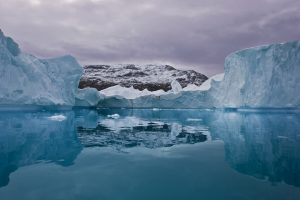The Diplomat author Mercy Kuo regularly engages subject-matter experts, policy practitioners, and strategic thinkers across the globe for their diverse insights into U.S. Asia policy. This conversation with Dr. Rebecca Pincus, director of the Polar Institute at the Wilson Center in Washington, D.C., is the 428th in “The Trans-Pacific View Insight Series.”
Examine the key components of China’s Arctic strategy and “Polar Silk Road.”
China has multiple interests in the Arctic, and its strategy in the region reflects the challenges of pursuing multiple interests in a region full of strong sovereign states. While some of China’s interests are tangible – like hydrocarbons, minerals, and potential shipping lanes – others are more intangible, including the shape of regional governance, the function of international law, and knowledge about global climate change.
These interests make sense: China is a resource-importing state reliant on global shipping, and climate change in the Arctic has global effects. Yet in attempting to pursue these multiple strategic interests simultaneously, Beijing has encountered challenges. Arctic states are united in the view that they are uniquely empowered to address governance questions due to their sovereignty in the Arctic. China’s interest in framing the Arctic as part of the “common heritage of mankind” counters this narrative, complicating its ability to successfully access strategic resources via relationships with particular Arctic states.
Following significant concerns about Chinese “debt-trap diplomacy” and “wolf warrior diplomacy” in the 2016-2020 timeframe, Arctic states took decisive steps to shore up scrutiny of foreign direct investment. Currently, we may be in a period of Chinese strategic retrenchment, further complicated by Russia’s 2022 invasion of Ukraine and an economic downturn in China.
Analyze how China with Russia’s cooperation is influencing Arctic governance.
China and Russia have overlapping interests in the Arctic region, but they are not in complete strategic alignment. One particular area of divergence is Arctic governance: China characterizes the Arctic as a global commons, while Russia endorses the primacy of Arctic states. Russia was long resistant to China’s observer status at the Arctic Council, for example.
China and Russia both seek to undermine U.S. leadership around the world, and to replace the rules-based global order with a more authoritarian system.
So, while there is overlap on the big picture, when it comes to the Arctic specifically, Beijing and Moscow do not share the same goals and objectives.
Evaluate the Pentagon’s Arctic strategy in managing the China challenge.
The recently released Department of Defense Arctic strategy foregrounds concern about China, while adopting a measured tone about the scope of the challenge. A section is devoted to the growing closeness between Russia and China in the Arctic, and the potential for their alignment, which is described as a concerning development.
The strategy identifies three pillars [for the Department of Defense’s approach to the Arctic]: enhancing capacity, in particular C5ISR (command, control, communications, computers, and cyber, and intelligence, surveillance, and reconnaissance); exercising to hone capabilities for cold region operations, including in concert with allies and partners; and engaging with allies and partners to strengthen relationships and present united support for shared interests.
Explain NATO’s role in mitigating risks of China-Russia military cooperation in the Arctic.
So far, military cooperation between China and Russia in the Arctic has been quite limited: there have been several joint naval and aerial exercises, at a fairly low level of operational complexity. There is concern that this could serve as a gateway to closer, more problematic cooperation.
However, outside of the Arctic, there are greater concerns. China is Russia’s largest customer for hydrocarbons, supplying revenue that supports Russia’s war in Ukraine. China is simultaneously exporting large quantities of components for weapons to Russia, further bolstering Russia’s ability to wage war.
As Russia becomes more and more dependent on Chinese support, what price will Beijing demand? And will any of those demands be Arctic-related? It appears that PLAN [People’s Liberation Army Navy] strategists are interested in sending Chinese submarines into the Arctic; Russia has one of the most advanced subsurface navies in the world.
NATO’s challenge is to successfully deter Russian aggression and uphold the rules-based order, while not escalating into conflict. NATO must also prevent China from giving its full support to Russia and avoid pushing the two closer together.
Assess the emerging geopolitical and geoeconomic risks as China-U.S. strategic competition in the Arctic intensifies.
U.S.-China competition spans the globe. In the Arctic, it takes a different course because of the large Russian presence, which introduces a three-way triangular dynamic. The main risk for the U.S. is of American efforts ultimately pushing China and Russia together into a more effective partnership.
The Arctic remains stable and is not a top priority for China. The Arctic is part of a global continuum of competition and is best understood in a global context: it is a cliche to note that what happens in the Arctic does not stay in the Arctic, but it is indeed true.

































